 W
WAnton Ausserer was an Austrian naturalist specialising in spiders. His father died when he was a youth, and he and his family suffered much economic hardship, but he was supported and encouraged by Camill Heller, professor of Zoology and Comparative Anatomy at the University of Innsbruck.
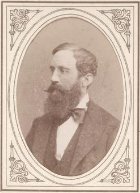 W
WJulius Edler von Bergenstamm was an Austrian entomologist who specialised in Diptera. He worked alongside Friedrich Moritz Brauer the Director of the Naturhistorisches Hofmuseum, Vienna.
 W
WFriedrich Moritz Brauer was an Austrian entomologist who was Director of the Naturhistorisches Hofmuseum, Vienna, at the time of his death. He wrote many papers on Diptera and Neuroptera.
 W
WStephan von Breuning was an Austrian entomologist who specialised in the study of beetles (Coleopterology), particularly within the longhorn family (Cerambycidae).
 W
WLeander (Franz) Czerny was an Austrian entomologist mainly interested in Diptera.
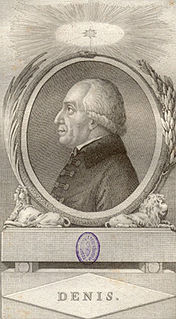 W
WJohann Nepomuk Cosmas Michael Denis, also: Sined the Bard, was an Austrian Catholic priest and Jesuit, who is best known as a poet, bibliographer, and lepidopterist.
 W
WCaspar Erasmus Duftschmid properly Kaspar was an Austrian naturalist and physician who made significant contributions to entomology, especially Coleoptera.
 W
WJohann Nepomuk Georg Egger, was an Austrian entomologist who specialised in Diptera.
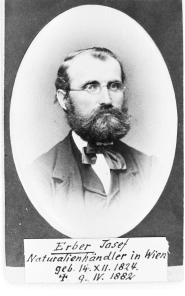 W
WJosef Erber was a natural history dealer in Vienna. He made expeditions to the Greek Islands.
 W
WBaron Cajetan von Felder was an Austrian lawyer, entomologist and liberal politician. He served as mayor of Vienna from 1868 to 1878.
 W
WRudolf Felder was an Austrian jurist and entomologist. He was mainly interested in Lepidoptera, amassing, with his father, Cajetan Felder, a huge collection.
 W
WGeorg Ritter von Frauenfeld was an Austrian naturalist and one of the leading scientists on board the Austrian frigate Novara during its round-the-world voyage. He was heavily involved in the development of the Naturhistorisches Museum in Vienna, where he was a curator.
 W
WKarl Eduard Hammerschmidt, also known as Abdullah Bey, was an Austrian mineralogist, entomologist, and physician.
 W
WErnst Heeger, was an Austrian amateur entomologist. He was a graduate of the Academy of Fine Arts in Vienna, a "Privatcadet" in the Napoleonic Wars, and from 1816 an employee of the Magistrat of Vienna Later he founded a school of languages and drawing in Modling. As an entomologist, he was particularly interested in the biology of insects and in the benefits and damage caused by insects. He collaborated with Vincenz Kollar.He published a series of entomology works entitled Beiträge zur Naturgeschichte der Insecten and he was a pioneer of micrography publishing Album microscopisch-photographischer Darstellungen aus dem Gebiete der Zoologie between 1861 and 1863.
 W
WHans Hirschke, sometimes Hanns, was an Austrian entomologist who specialised in Lepidoptera. He was first a linen weaver in Brno, then a gardener's apprentice. In 1899, he was Head of the Exchange Office Vienna and a Member of the Entomological Association of Vienna. Hans Hirschke described Alcis bastelbergeri and Phengaris rebeli in Jber. Wien. ent. Ver.
 W
WGabriel Höfner was an Austrian entomologist, musician and composer.
 W
WRobert Latzel was an Austrian myriapodologist and entomologist who published a series of pioneering works on millipedes, centipedes, and allies. His collection of myriapod specimens, today housed in the Natural History Museum of Vienna, includes many type specimens. His monographs on the myriapods of the Austro-Hungarian Empire were the first comprehensive treatments of the large region's centipede and millipede faunas. He named nearly 130 taxa of millipedes and over 40 centipede groups, as well as four taxa each of pauropods and symphylans. His work on millipedes pioneered the use of gonopods in millipede classification and species recognition. At least three authors have honored Latzel by naming a genus Latzelia.
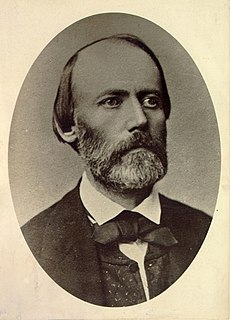 W
WJulius Lederer was an Austrian entomologist who specialised in Lepidoptera. He travelled widely: to Andalusia in 1849 Carinthia with Johann von Hornig (1819–1886) in 1853, İzmir in 1864, Magnesia in 1865, Amasya and Turkey in 1866, Mersin and the Taurus Mountains in 1867, Lebanon in 1868 and the Balkans in 1870).
 W
WGustav L. Mayr was an Austrian entomologist and professor in Budapest and Vienna. He specialised in Hymenoptera, being particularly known for his studies of ants.
 W
WJohann Christian Mikan was an Austrian-Czech botanist, zoologist and entomologist. He was the son of Joseph Gottfried Mikan.
 W
WKarl Maria E(h)renbert Freiherr von Moll was an Austrian naturalist and statesman.
 W
WIda Laura Pfeiffer, née Reyer, was an Austrian explorer, travel writer, and ethnographer. She was one of the first female travelers, whose bestselling journals were translated into seven languages. She journeyed an estimated 32,000 kilometers by land and 240,000 kilometers by sea through Southeast Asia, the Americas, Middle East, and Africa, including two trips around the world from 1846 to 1855. She was a member of geographical societies of both Berlin and Paris, but was denied membership by the Royal Geographical Society in London as it forbade the election of women before 1913.
 W
WJohann Baptist Emanuel Pohl was an Austrian botanist, entomologist, geologist, mineralogist, and physician.
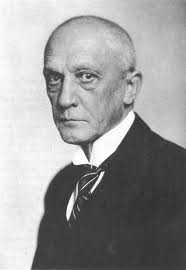 W
WHans Rebel was an Austrian entomologist who specialised in Lepidoptera.
 W
WEdmund Reitter was an Austrian entomologist, writer and a collector.
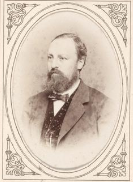 W
WAlois Friedrich Rogenhofer was an Austrian entomologist. He was a curator at the Naturhistorisches Museum in Vienna, where he was the first keeper of the Lepidoptera. Rogenhofer was mainly interested in Lepidoptera, and Hymenoptera.
 W
WIgnaz Schiffermüller was an Austrian naturalist mainly interested in Lepidoptera.
 W
WIgnaz Rudolf Schiner was an Austrian entomologist who specialised in Diptera.
 W
WFerdinand Joseph Schmidt was an Austro-Hungarian businessman, naturalist and explorer who was among the pioneers of biospeleology, the study of cave fauna.
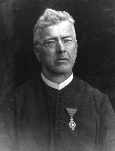 W
WGabriel Strobl was an Austrian Roman Catholic priest and entomologist who specialised in Diptera.
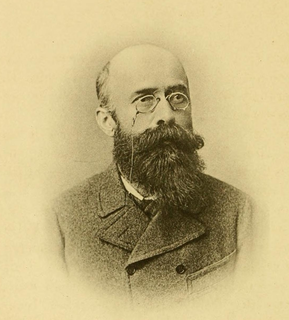 W
WVeit Graber latinized as Vitus Graber was an Austrian pioneer of insect physiology, embryology, anatomy, and behaviour. He conducted experiments to demonstrate insect senses and perception while also looking at the structures responsible for them. He was the first to identify what he termed as chordotonal organs. A muscular and pear-shaped structure of unknown function found in the larvae of horseflies described by him is now known as Graber's organ. He was the author of several major books on insects including Die Insekten (1877–78).
 W
WFriedrich August von Gebler or Fedor Vasilievich Gebler was a Prussian physician, explorer, and naturalist who worked in the Russian Empire and was a corresponding member of the Imperial Academy of Sciences of Russia. He described several species of beetle and the Altai snowcock.
 W
WErich Wasmann was an Austrian entomologist, specializing in ants and termites, and Jesuit priest. He described the phenomenon known as Wasmannian mimicry. Wasmann was a supporter of evolution, although he did not accept the productivity of natural selection, the evolution of humans from other animals, or universal common descent of all life. Rather, he believed that common ancestry was restricted to what he called "natural species" which were generally larger groups than species, genera, or even families. His natural species he identified with the "paleontological species" of Melchior Neumayr. Wasmann also was involved in a long-running dispute with Ernst Haeckel over Monism. His father was the painter Friedrich Wasmann.
 W
WFranz Josef Maria Werner was an Austrian zoologist and explorer. Specializing as a herpetologist and entomologist, Werner described numerous species and other taxa of frogs, snakes, insects, and other organisms.